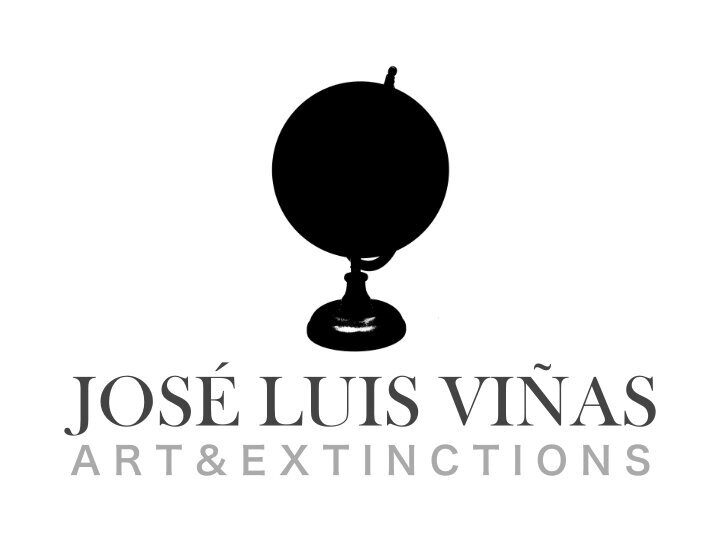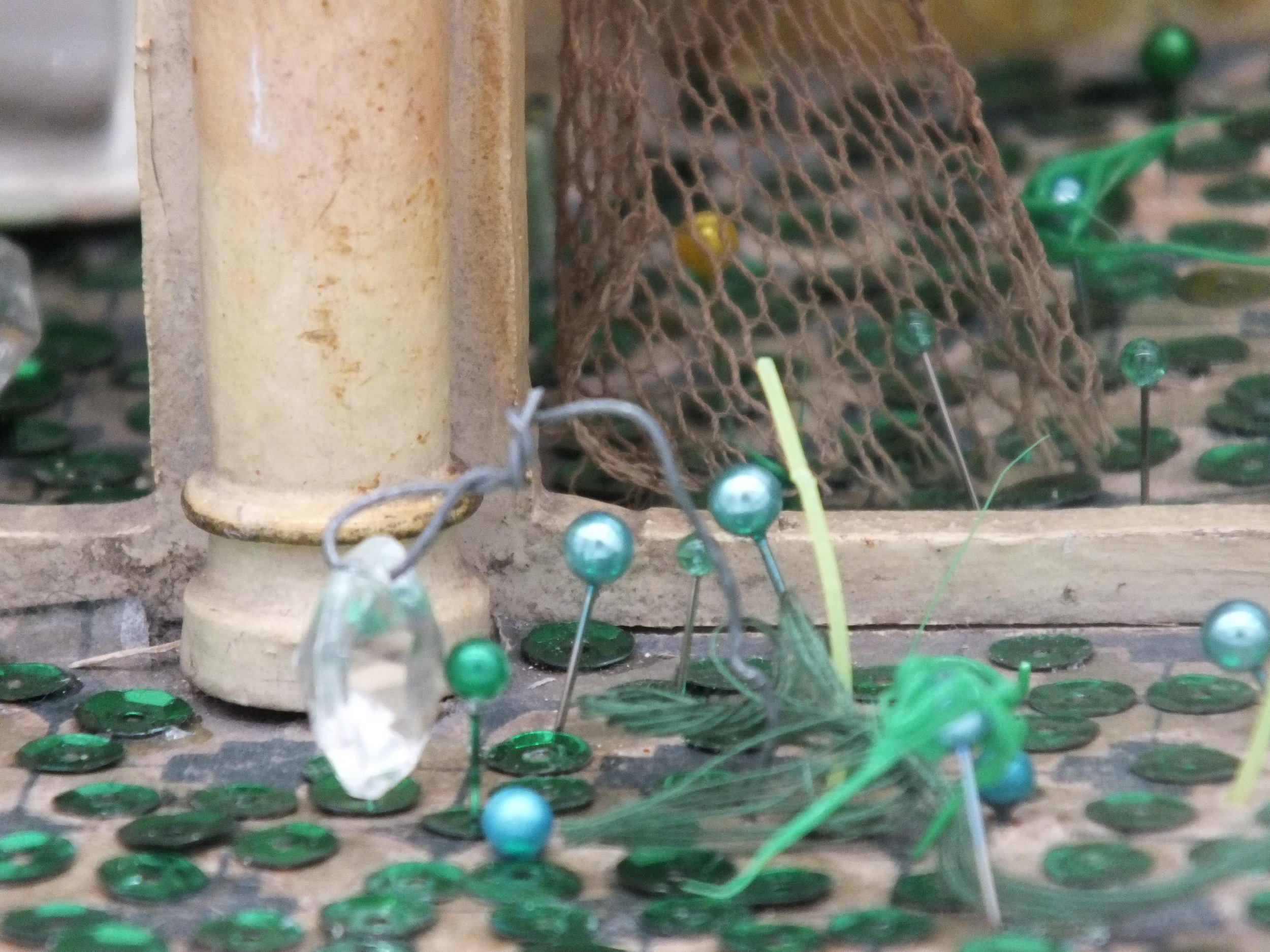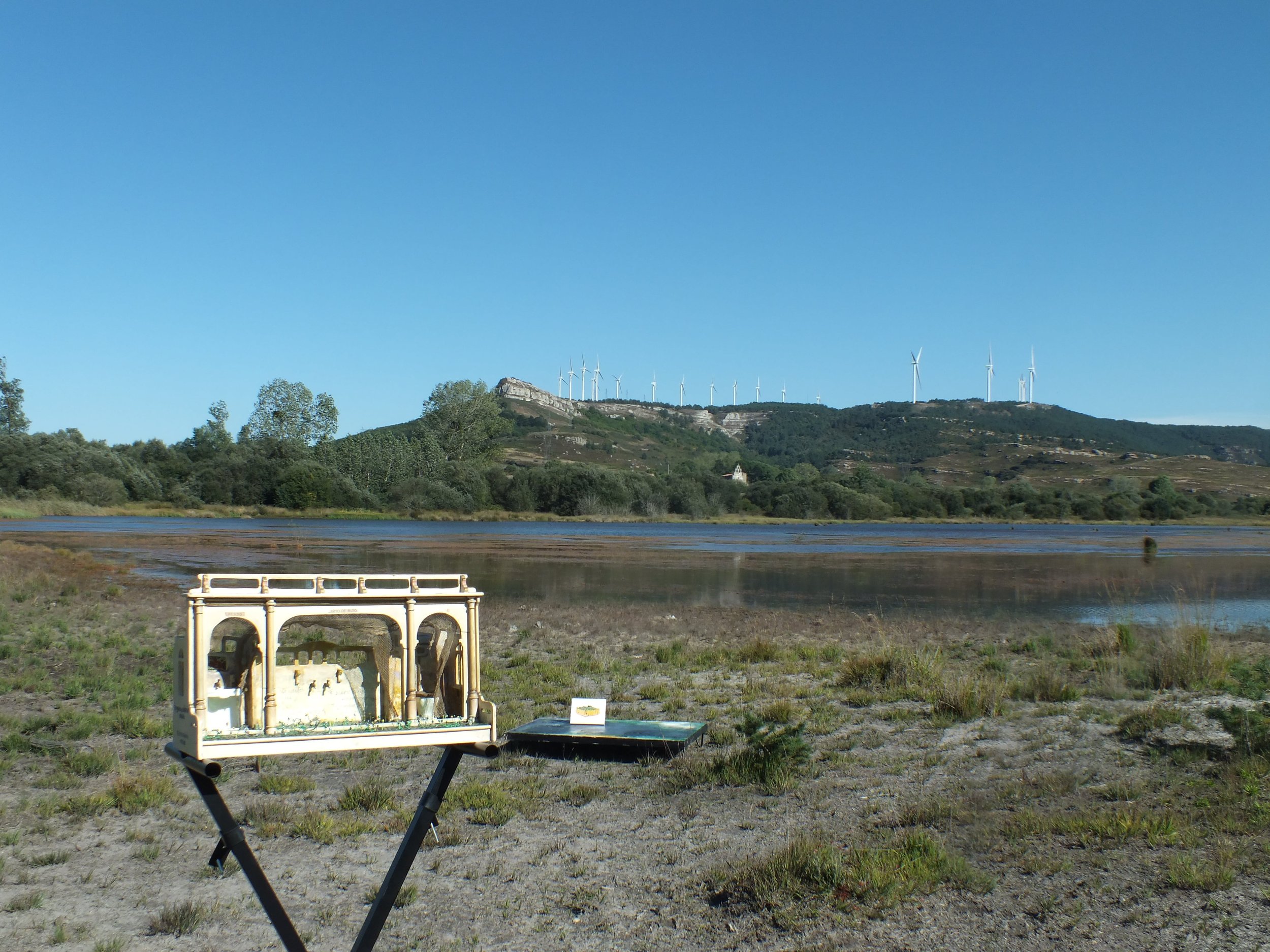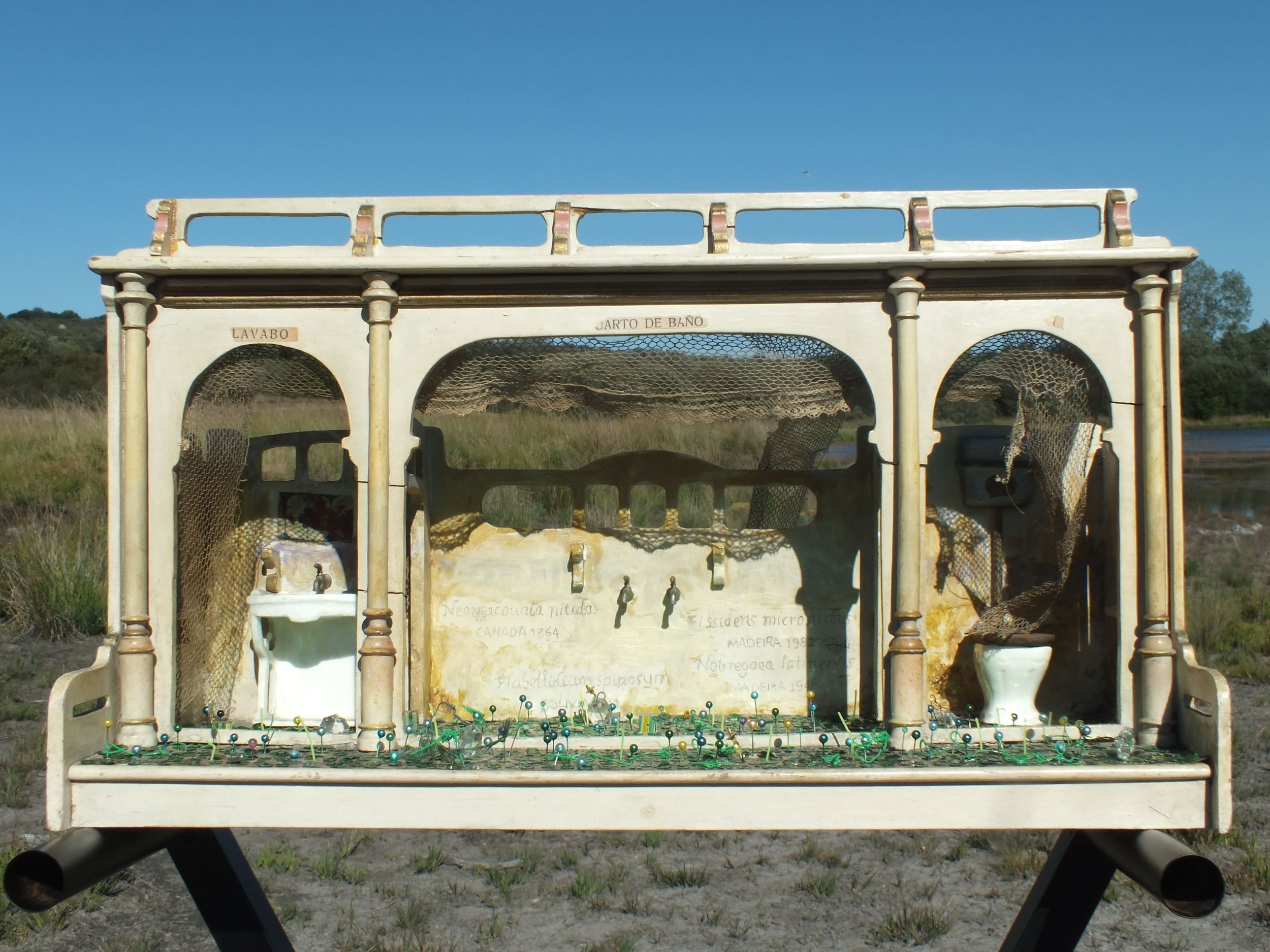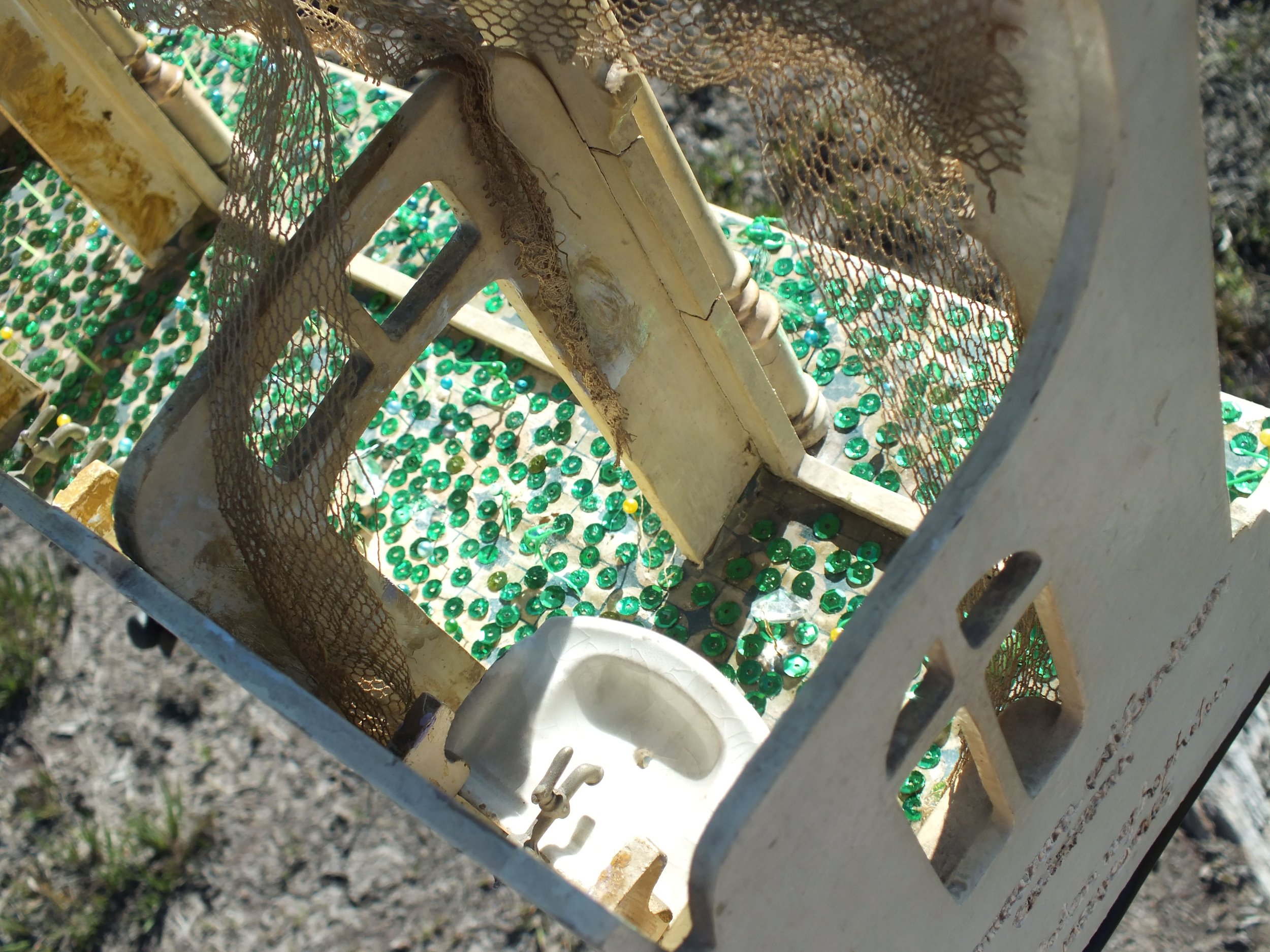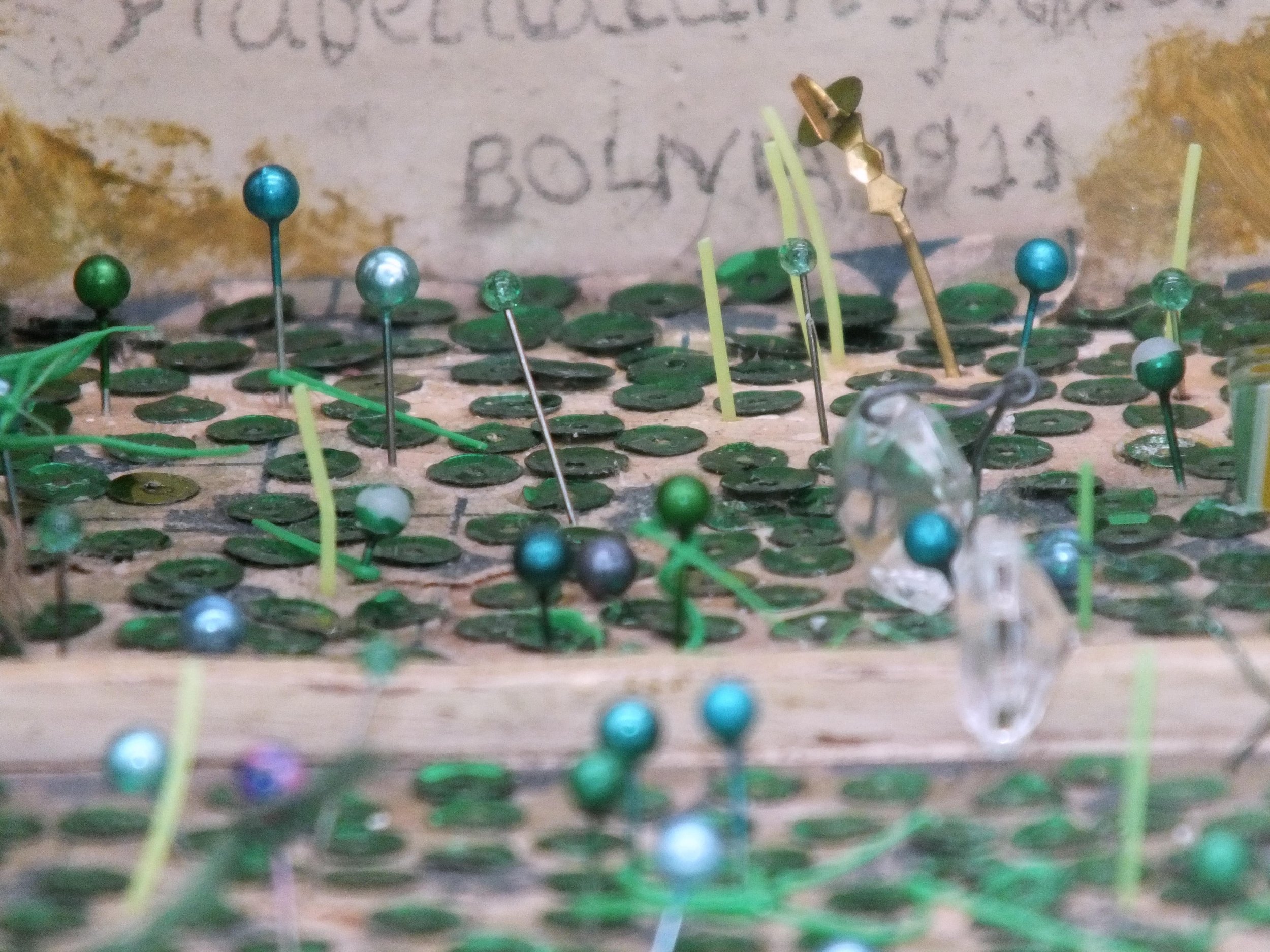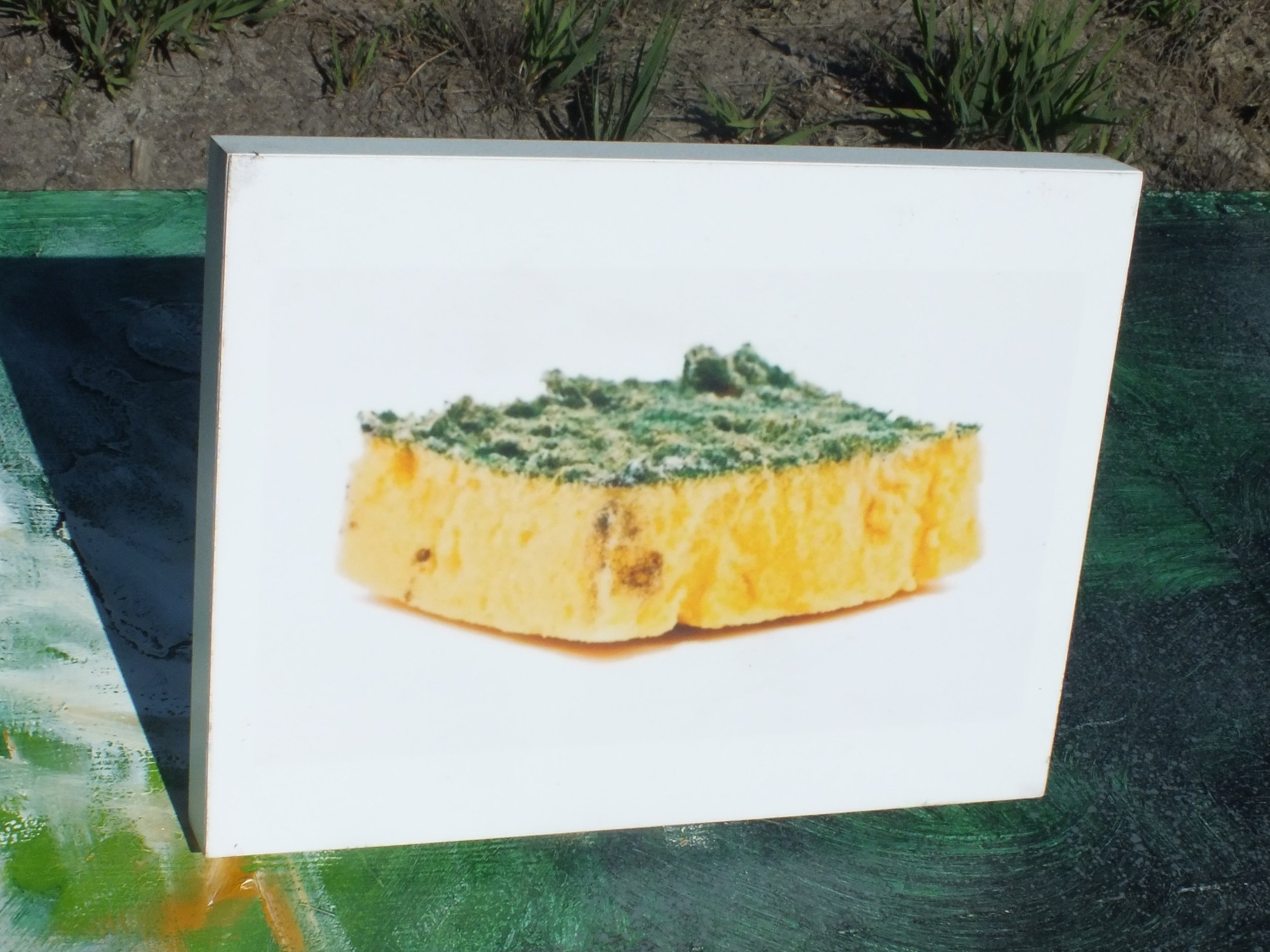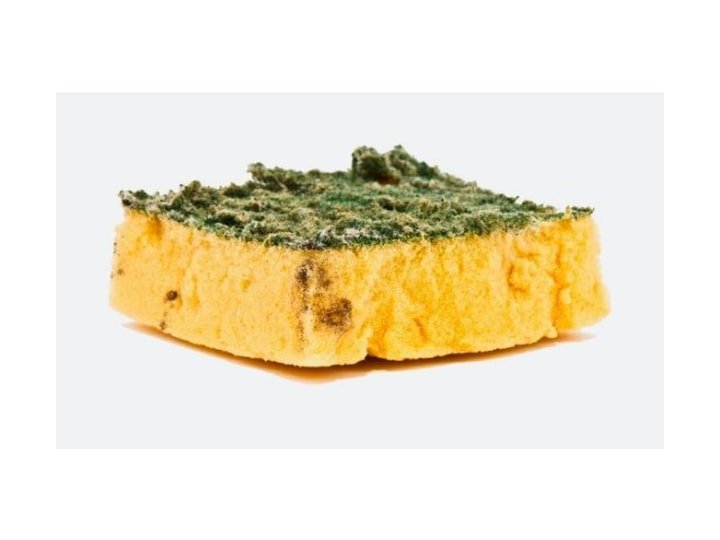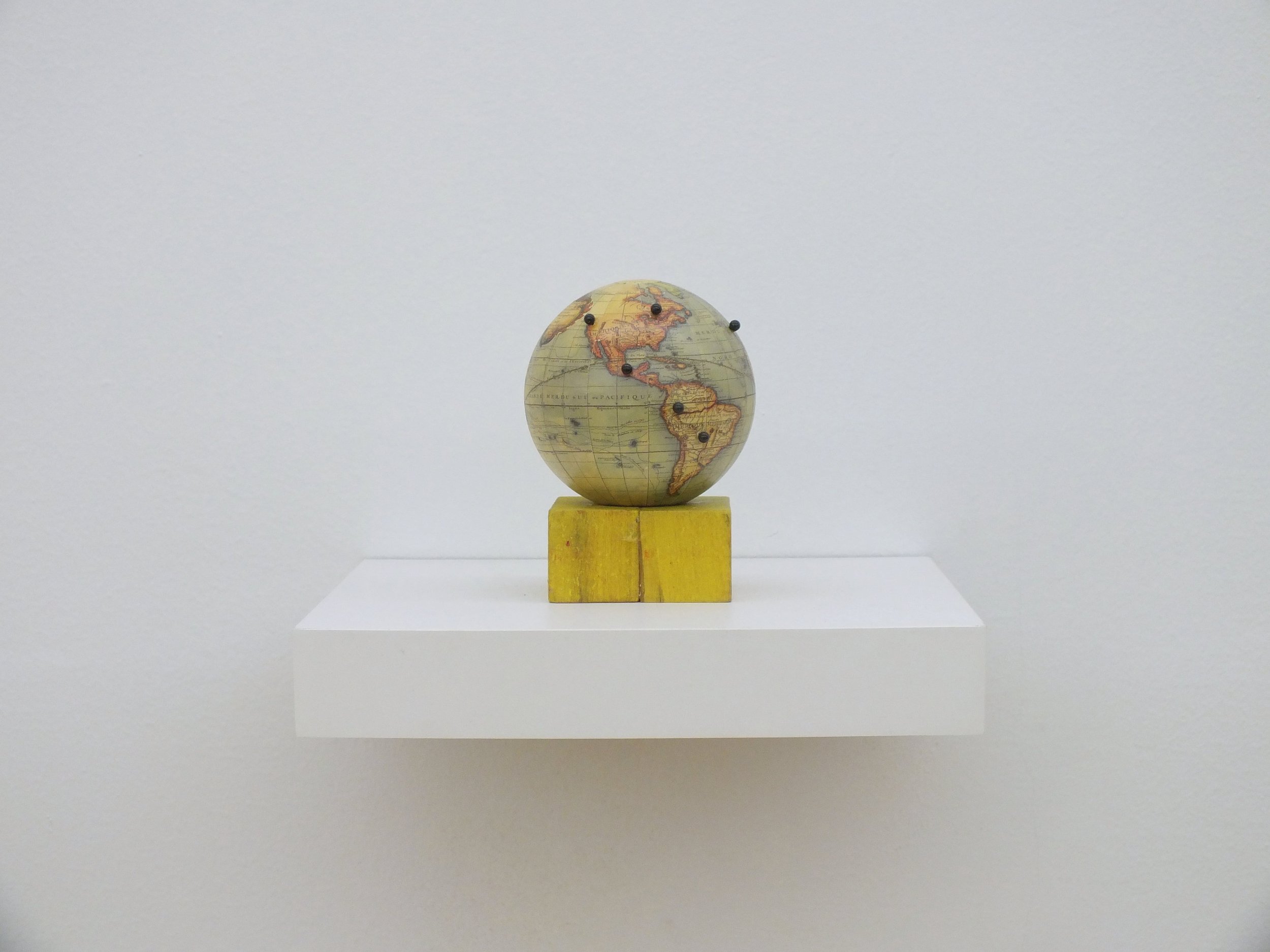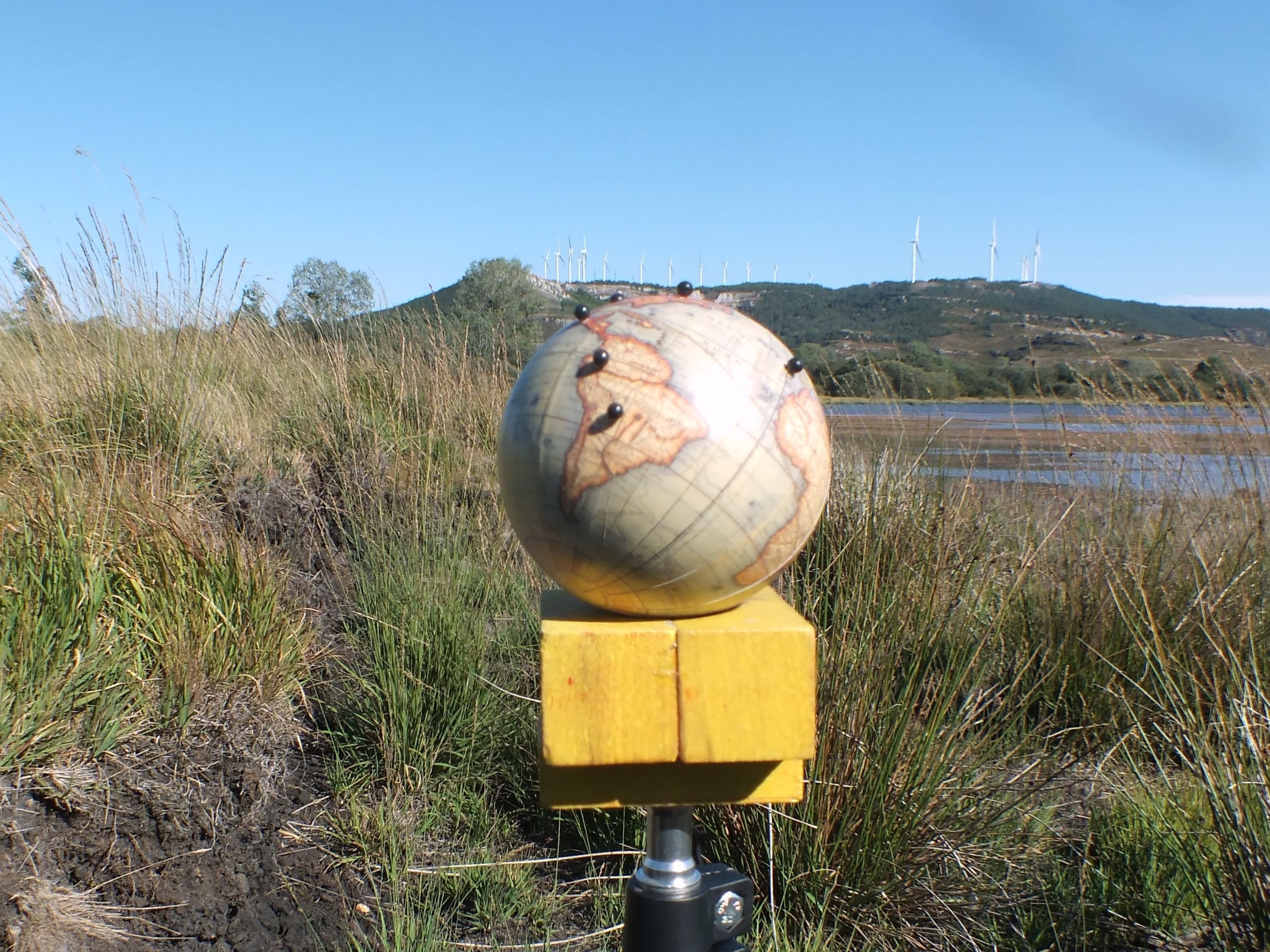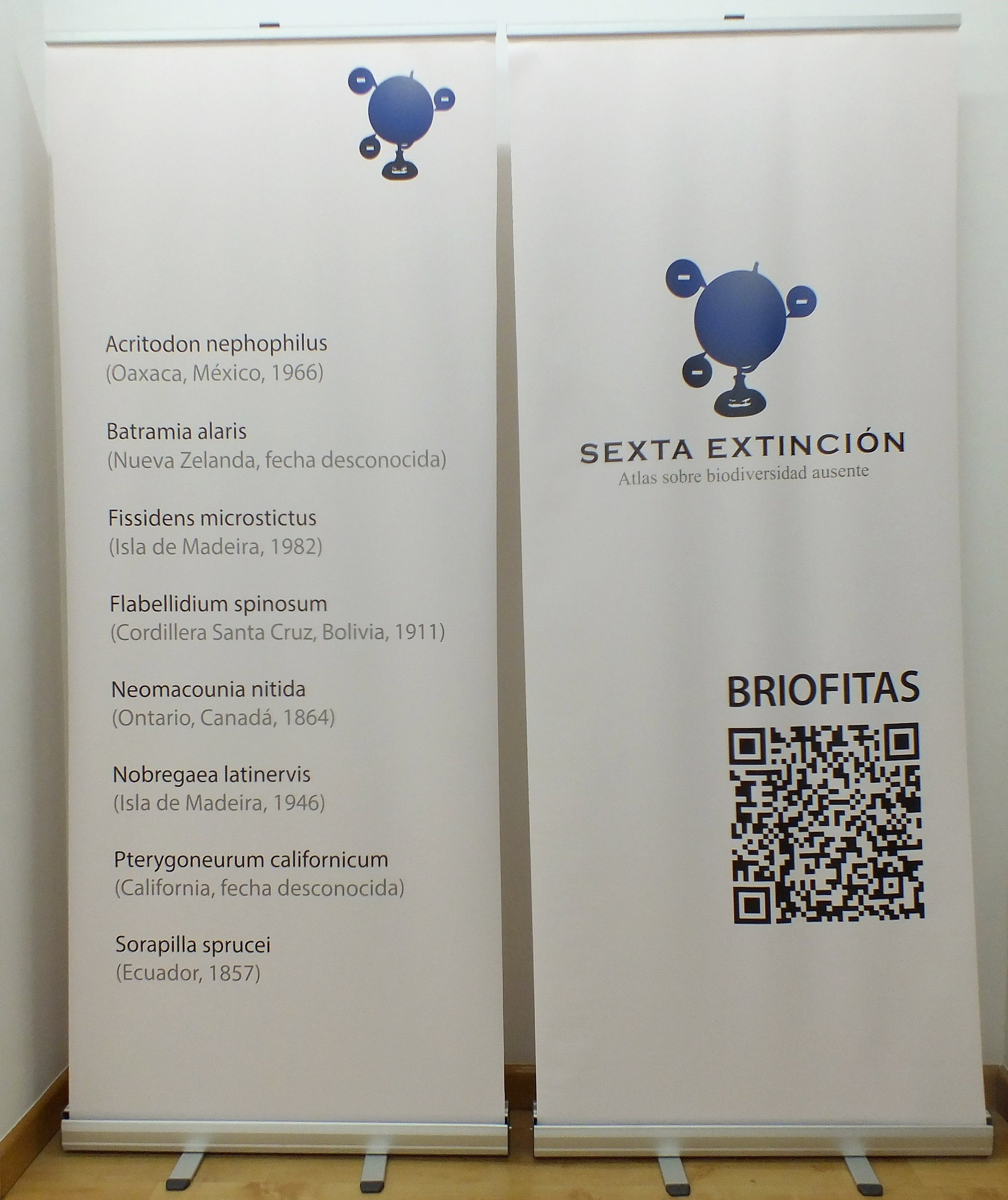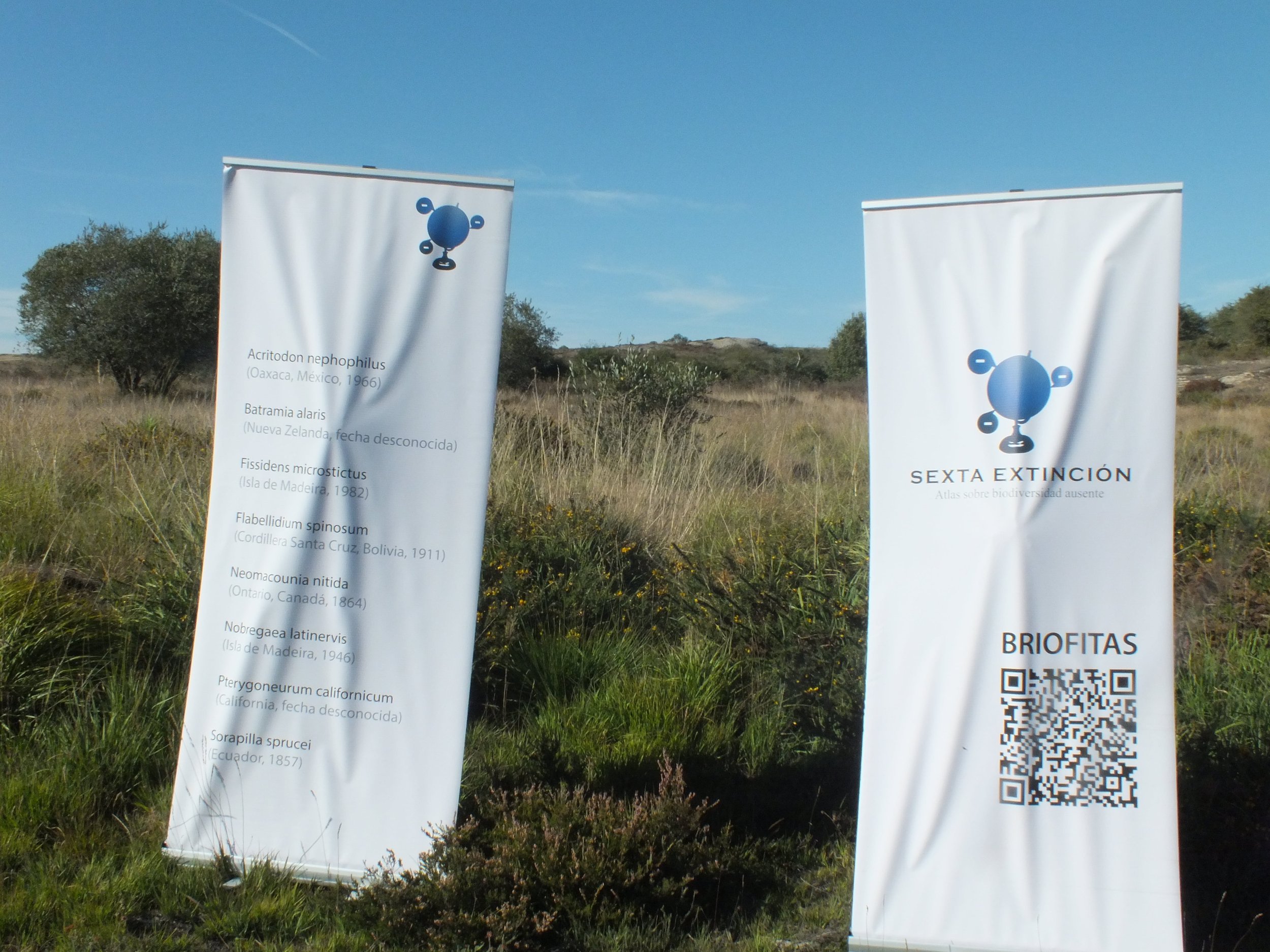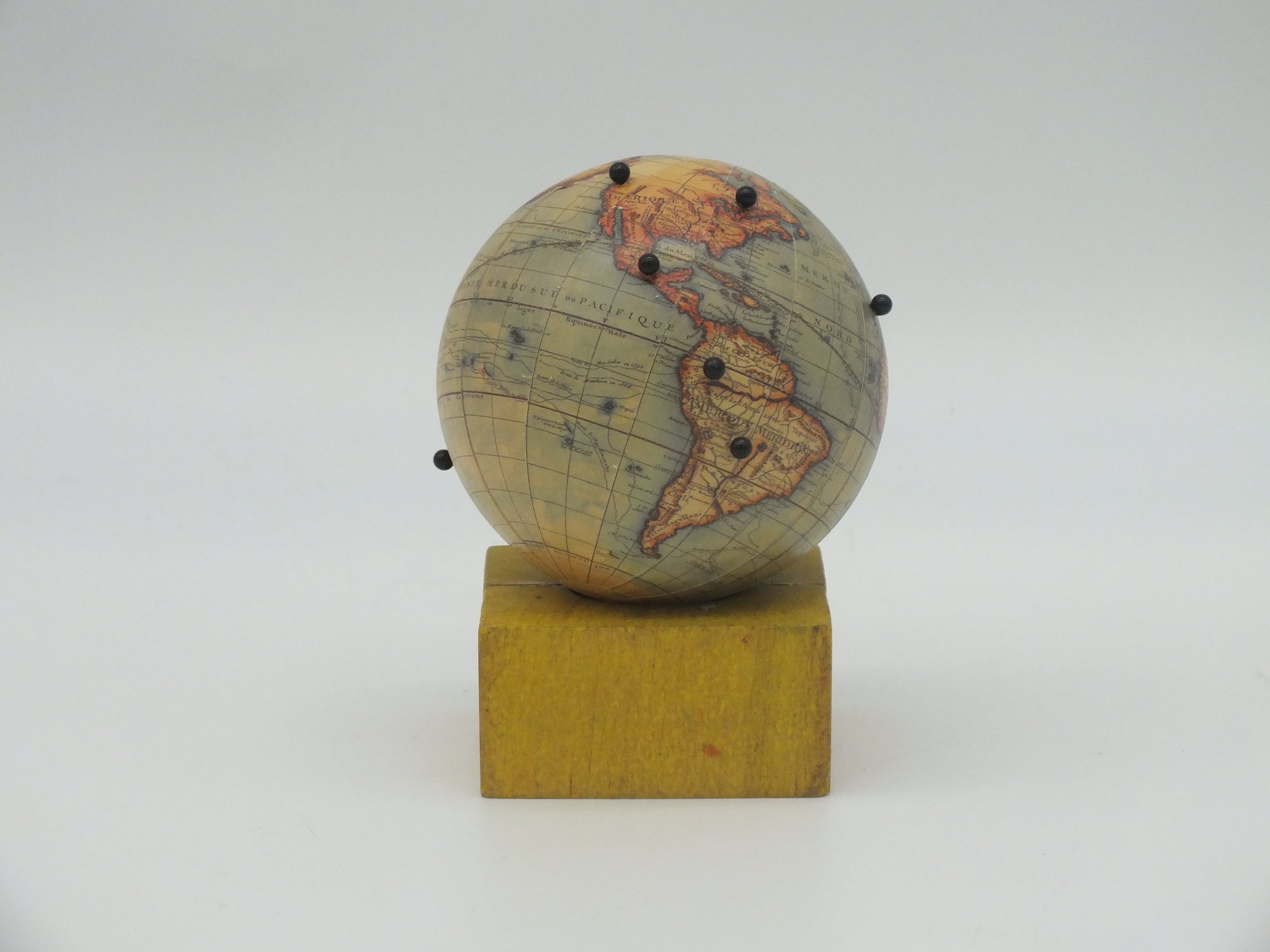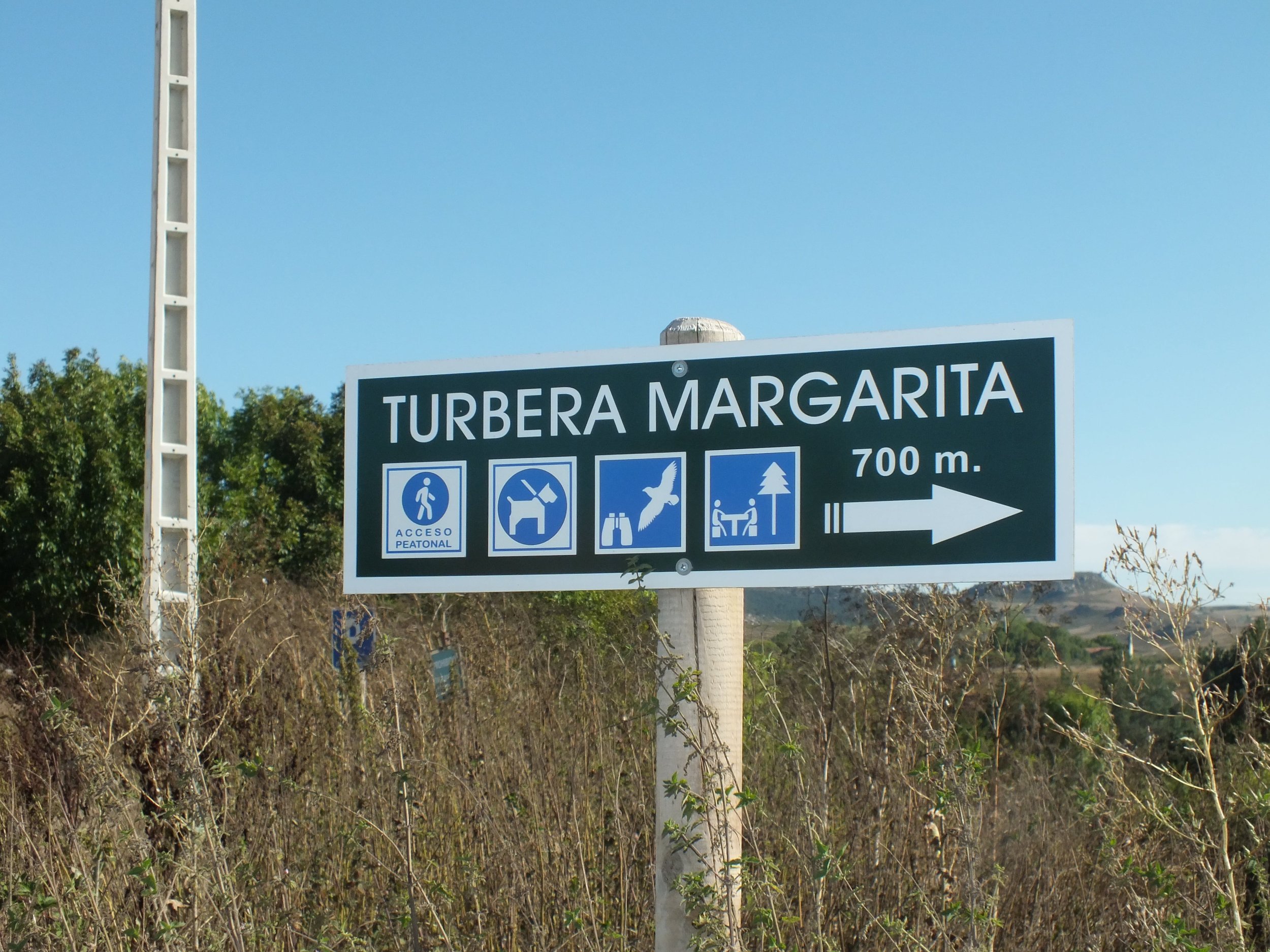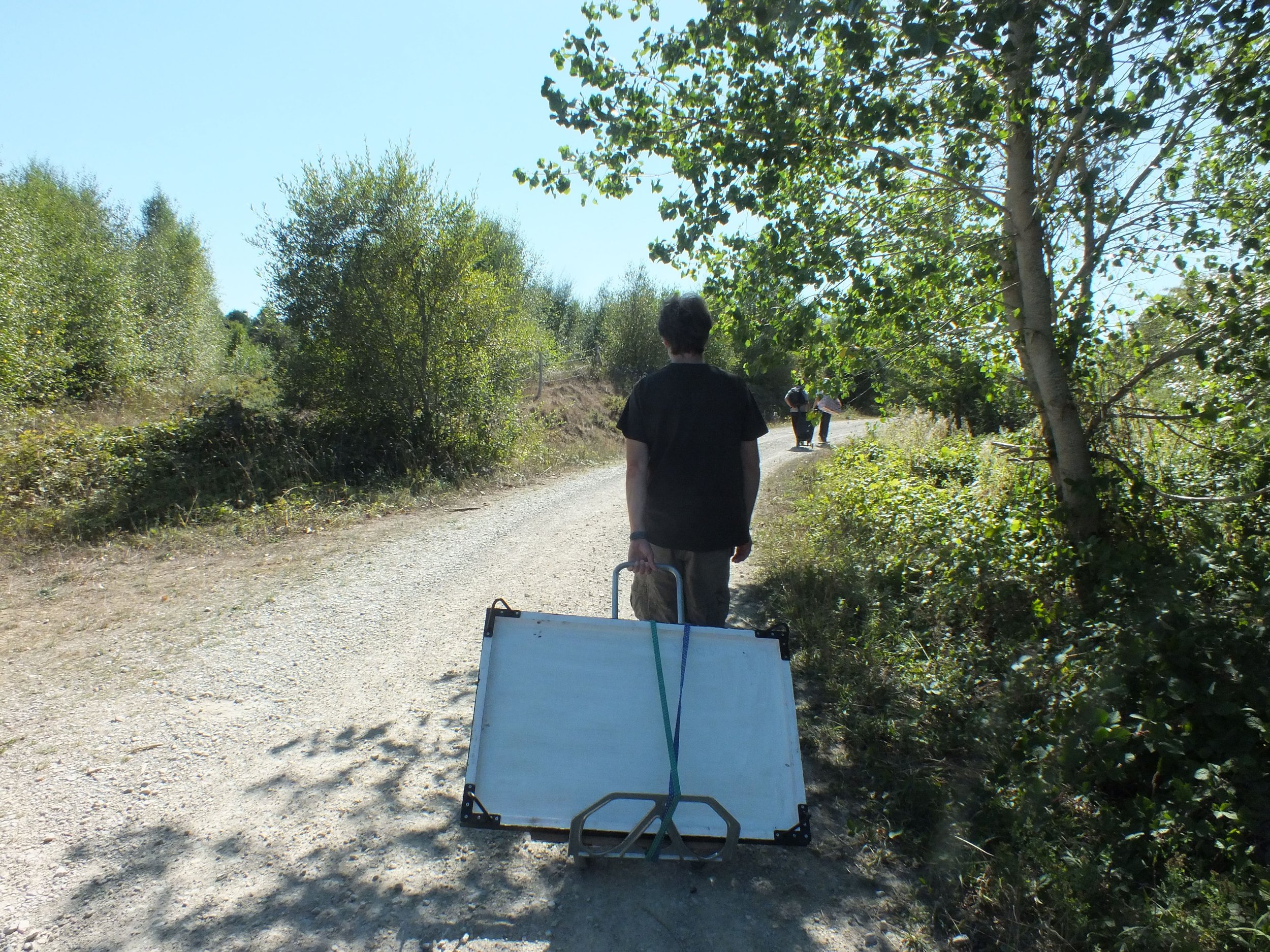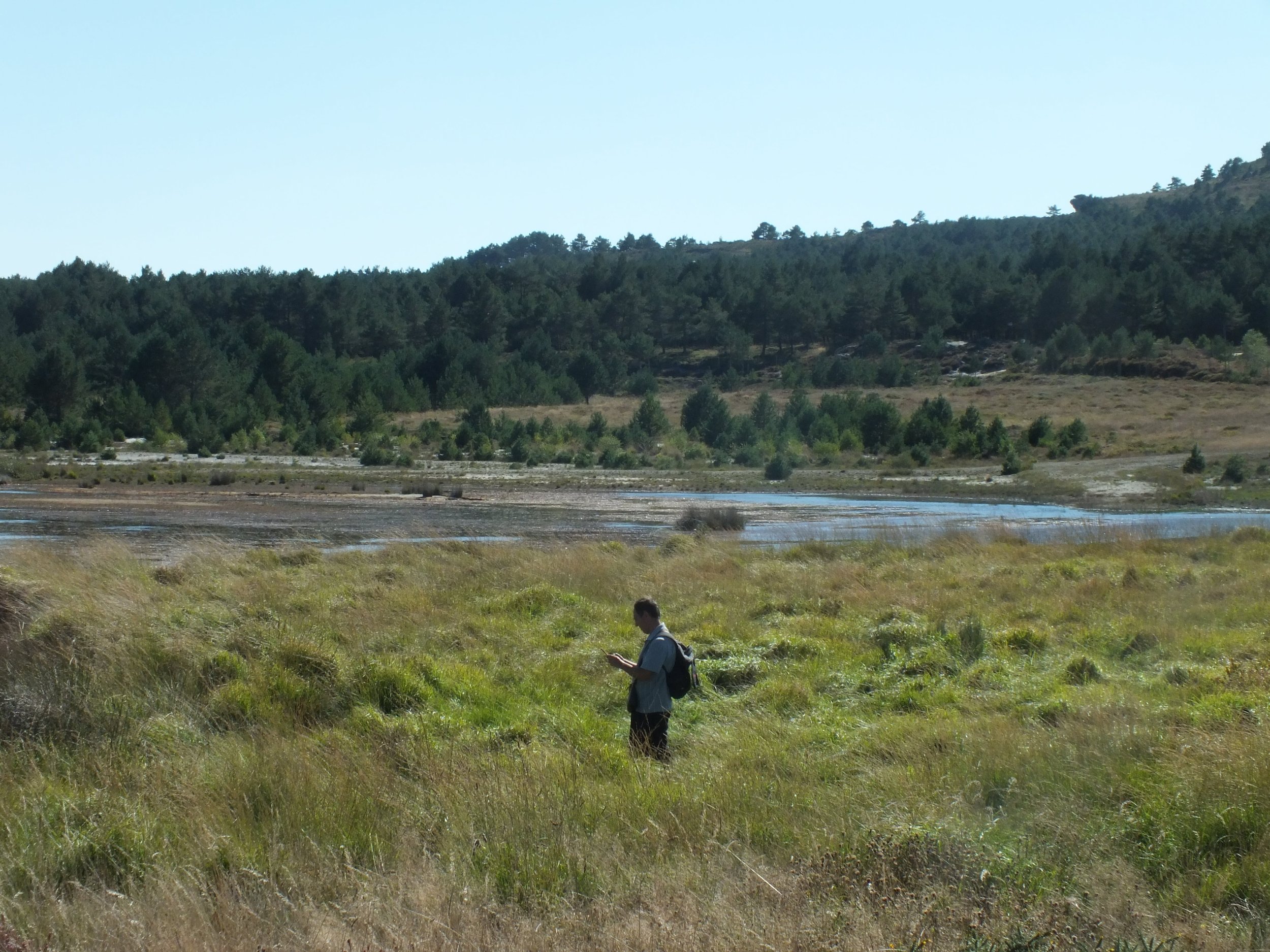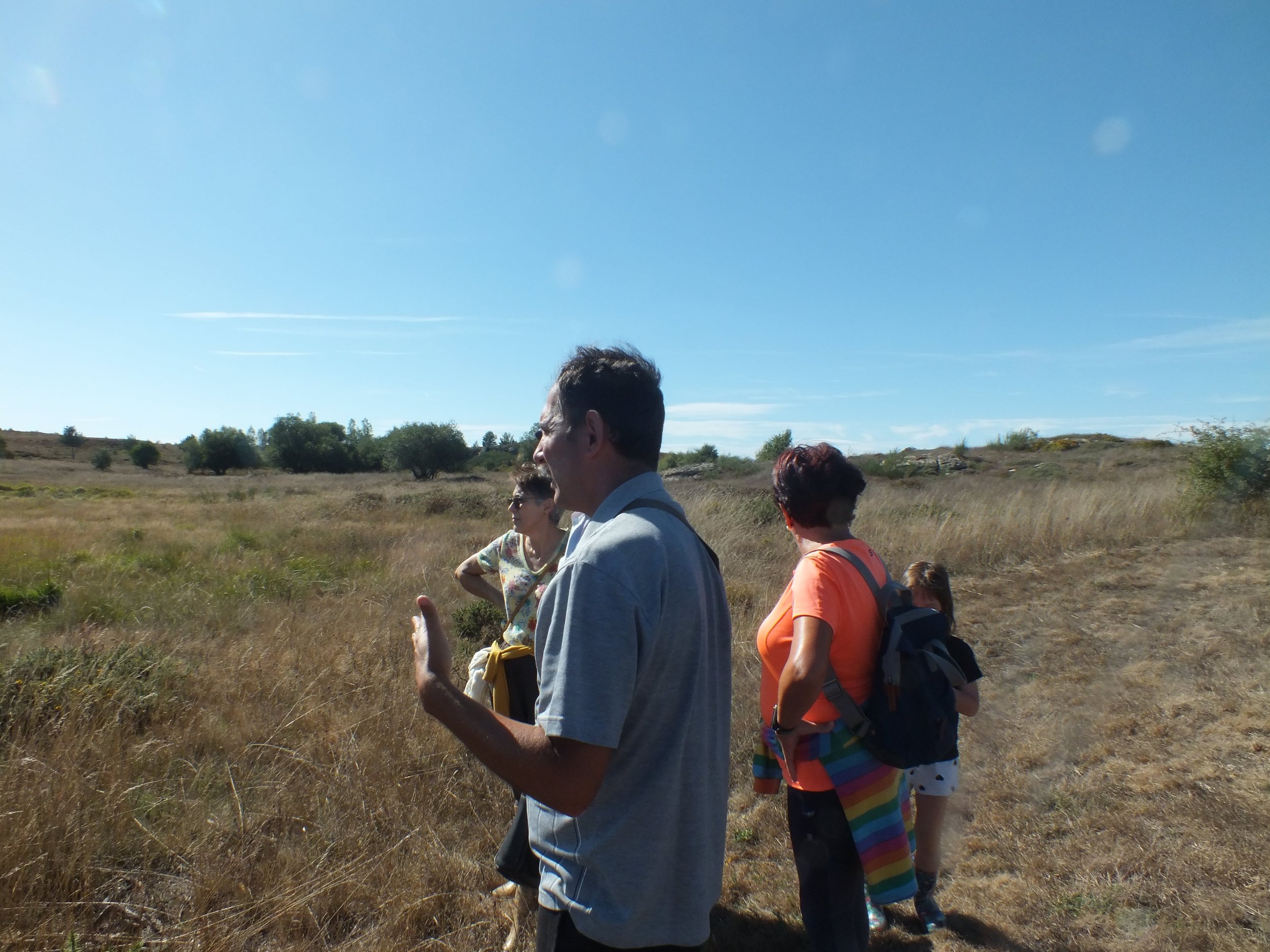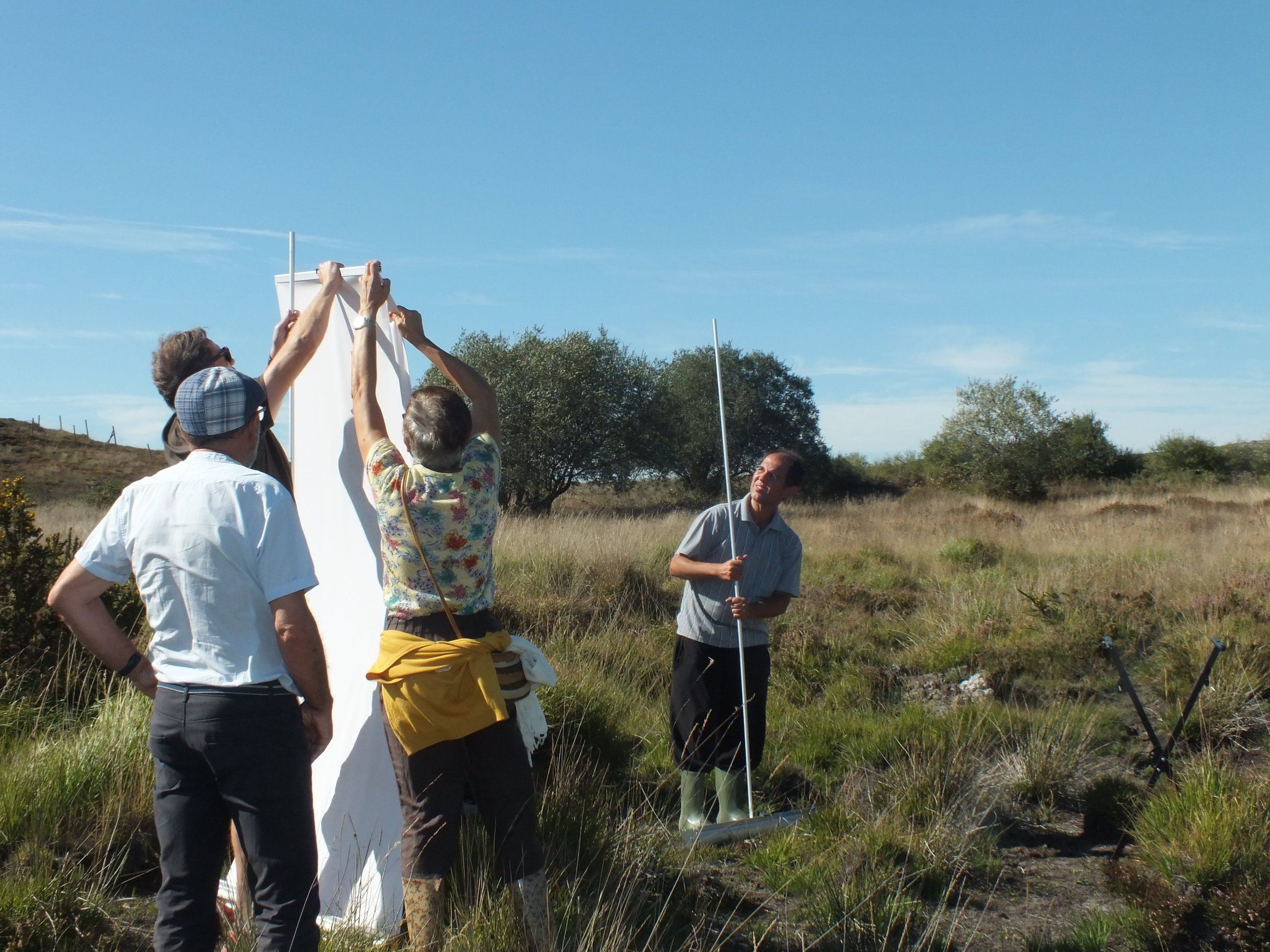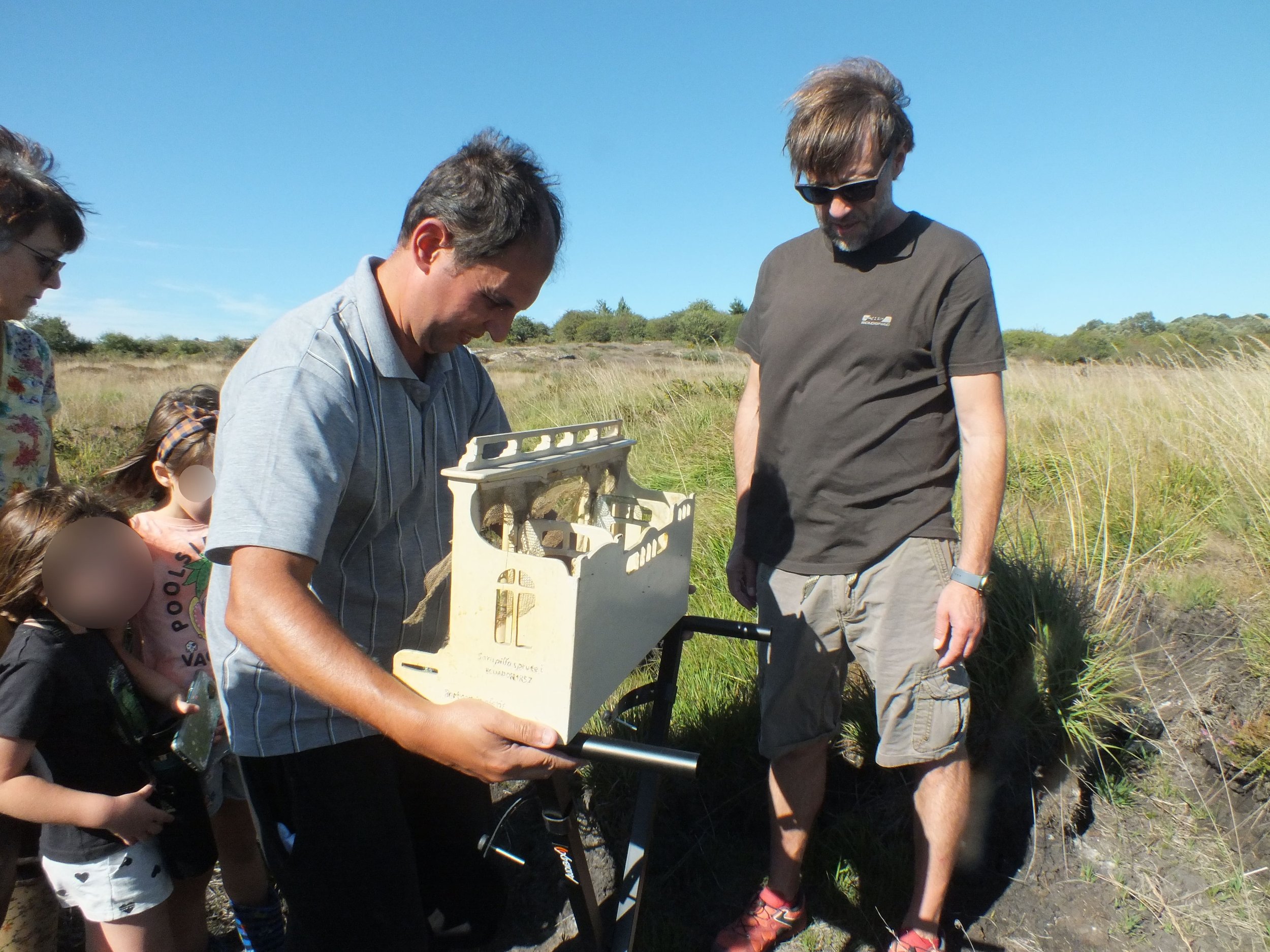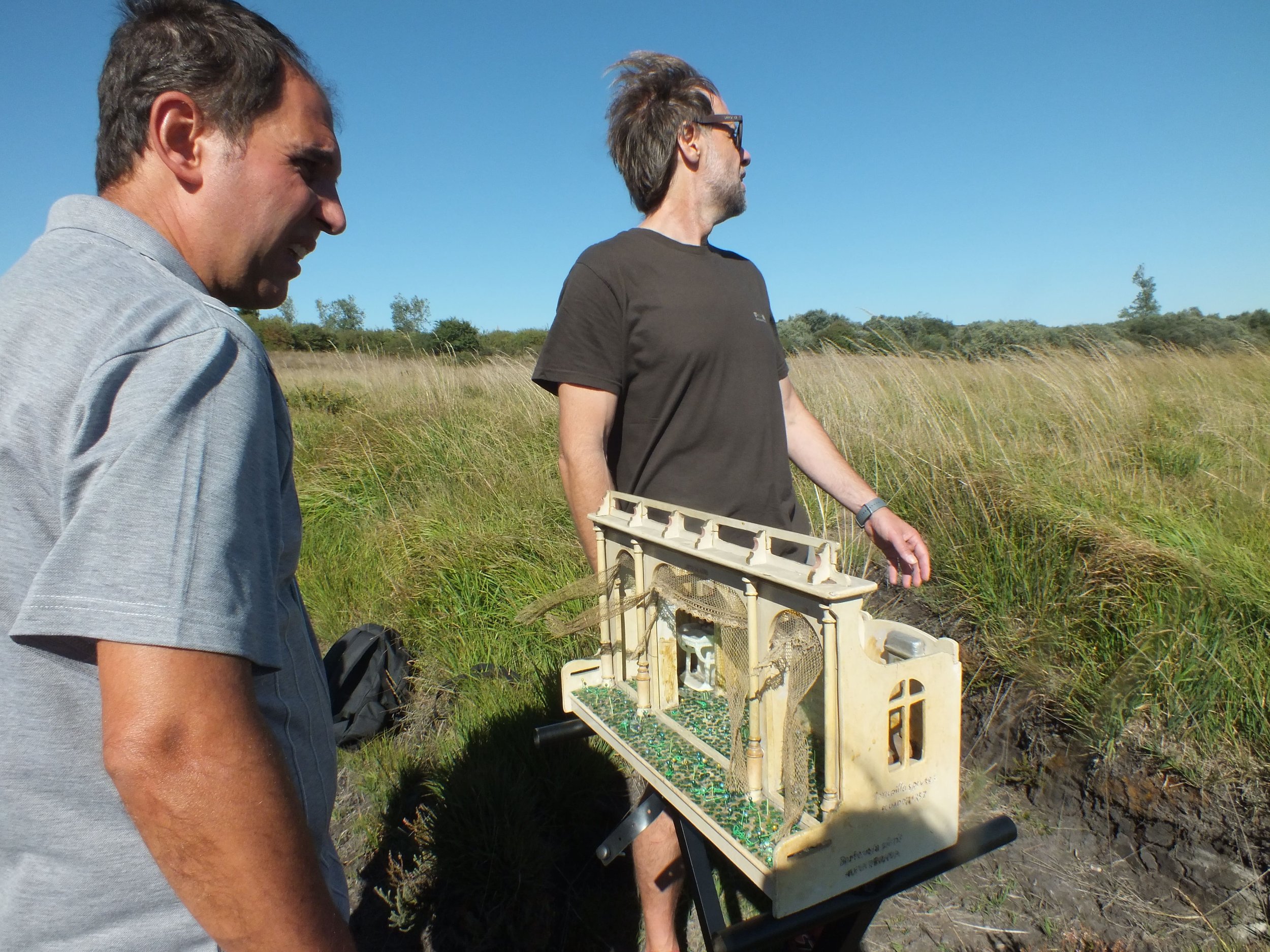EXTINCT BRYOPHYTES/ 1800-2020 CE
About the project
This tiny museum is displayed inside an early XXth. century dollhouse. Eight recently extinct species of bryophyte plants are honoured therein. Bryophytes are non-vascular plants like mosses& liverworts.
The dollhouse floor has been artistically intervened. Extinct flora is vaguely depicted with resin, glass, wire, pins and sequins. The floor reminds vegetal tapestry patterns. Lost species are handwritten on the dollhouse walls.
The museum has been moved to a peatbog by Ebro River in Northern Spain. This place has undergone severe ecological damage and restoration attempts.
A file with dates and places of extinction, and a pin pointed earth globe do provide further information about the quest.
· Early XXth. century doll-house 55 x 20 x 25 cm.
Wood, resin, sequins, wire, glass, pins.
· Colour photograph on light panel, 10 x 15 cm.
2021-2022
EXTINCT BRYOPHITES/SPECIES LIST
Acritodon nephophilus/ Batramia alaris / Fissidens microstictus / Flabellidium spinosum/ Neomacounia nitida/ Nobregaea latinervis/ Pterygoneurum californicum/ Sorapilla sprucei
This eco-memorial has been moved to an ancient peatbog nearby Ebro River in Northern Spain. Peatbogs are not common in Spain because of its dry and warm climate, but some still remain. This particular landscape is under a reconstruction project since 2002. Before that year, national distilleries exploited the turf as an industrial resource. Turf has been proven as an optimum source of heat in the process of wheat roasting. Peatbogs are also home for abundant life, including mosses of Spagnum gender. They also have the capacity to catch carbon dioxide from the atmosphere and slowly burry it down deep in the ground. In fact they have become useful ecosystems to fight climate change.
Briophytes memorial exhibited at Espacio Tangente, Burgos, Spain 2022.
